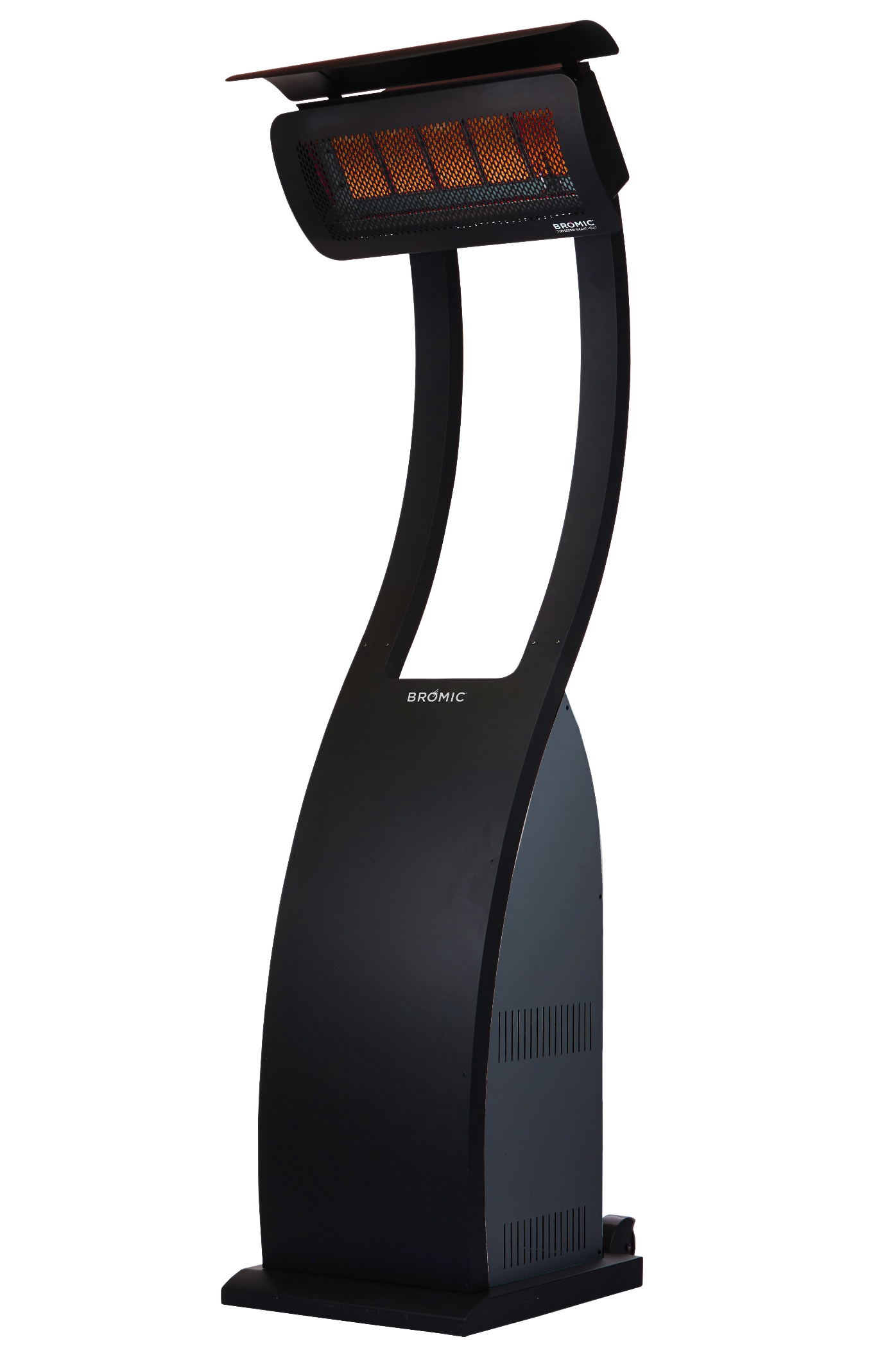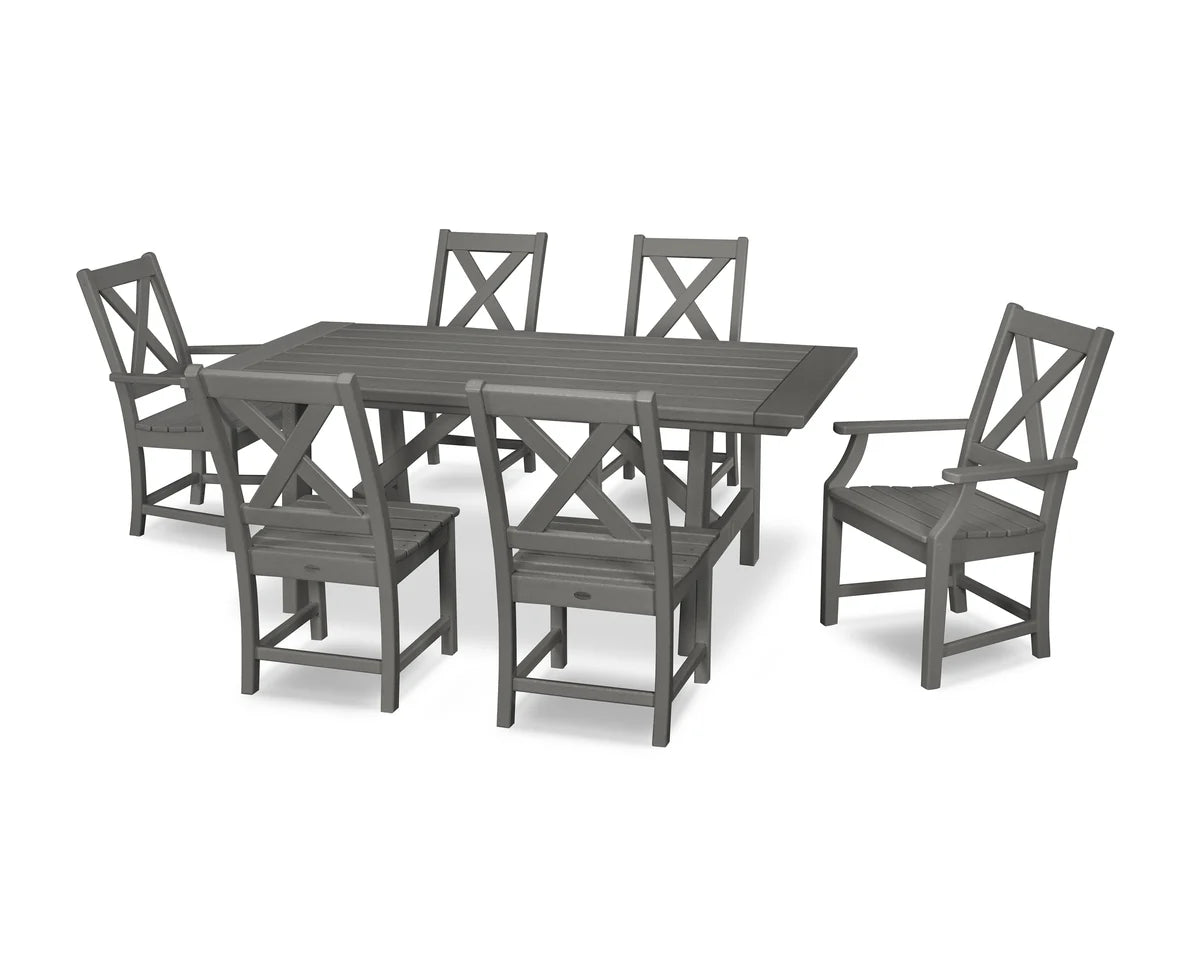Gas vs. Charcoal: What San Antonio BBQ Lovers Need to Know
Grilling is more than just a cooking method; it’s a cherished tradition for many in San Antonio, where the flavors of BBQ bring family and friends together. But with so many options available—charcoal versus gas—it can be tough to decide what’s best for your backyard cookout. If you’re someone who loves the deep, smoky taste that only charcoal can provide, or if you value the ease and quickness of gas grilling, there’s a lot to consider. In this article, we’ll break down the perks of each style and help you understand how your grill choice can impact not just the food you serve but also the overall spirit of your outdoor gatherings.
San Antonio BBQ lovers should know that gas grills offer convenience and quick heat control, making them ideal for weeknight cooking, while charcoal grills provide a traditional smoky flavor that many grilling enthusiasts cherish. Each type has its advantages; gas is easier to use and maintain, while charcoal requires more skill and time but often results in richer flavors in grilled meats—making your choice dependent on personal preferences and cooking style.
Comparing BBQ Styles: San Antonio’s Love for Charcoal and Gas
The division between charcoal and gas grilling in San Antonio isn’t just a matter of preference; it embodies a lifestyle choice that guides many weekends and family gatherings. For charcoal aficionados, it’s all about the journey—the process of lighting the coals, waiting for that perfect glow, and then watching as the flames dance around the meat, infusing it with a rich, smoky flavor that’s hard to replicate. The taste is often described as primal, evoking memories of backyard cookouts and community gatherings.
On the other side of the grill lies the convenience-loving gas enthusiasts who appreciate the speed and simplicity that gas grills provide.
Gas grilling has its merit, especially for those with busy schedules who might prefer to fire up their grill quickly after a long day at work. Lighting a gas grill often takes mere seconds, allowing cooks to focus on perfecting their recipes rather than managing the complexities of charcoal.
Users rave about having precise control over their cooking temperature, which translates to achieving that perfectly seared steak or precisely grilled vegetables without worrying about hot spots or flare-ups. To many, a gas grill feels like an extension of their kitchen—easier to clean and maintain while still delivering delicious results.
Another practical advantage of gas grills is their adaptability—they thrive in various conditions. Rain or shine, your BBQ plans don’t have to stall when using a gas model.
According to some community surveys, it’s noted that 60% of BBQ lovers in San Antonio lean toward charcoal grilling for its deep flavors, while 40% enjoy the straightforward nature of gas grilling. This split showcases not just personal choices but also reflects broader lifestyle preferences among city residents.
Ultimately, what unites both camps is their passion for grilling and gathering around good food.
You’ll find enthusiasts from both sides eagerly sharing tips and ideas on how to make each method shine. Whether it’s exploring unique rubs and marinades or experimenting with different types of wood chips for smoking on charcoal grills, there’s no shortage of creativity in the San Antonio BBQ scene. Events such as local festivals attract crowds where everyone can sample each other’s favorite dishes and techniques, fostering camaraderie and deeper appreciation across all BBQ styles.
When considering whether to go with charcoal or gas for your next cookout, it’s essential to think about the flavors and experiences each style offers. Each method brings its own unique flair that resonates with BBQ lovers throughout this vibrant Texas city.
As we explore further, the depths of flavor found with one particular method will become evident, steering our conversation toward the essence that makes it so beloved.
The Smoky Flavor of Charcoal BBQ
One of the main reasons BBQ lovers in San Antonio opt for charcoal is the unique, robust flavor it brings to the table. When you ignite charcoal, it does more than heat your food; it creates smoke that infuses the meat with flavors that gas grills simply can’t replicate. This smoky essence emerges from a complex interaction between heat and wood components present in the charcoal itself, producing chemical compounds like guaiacol and syringol. These compounds are known for their rich, aromatic characteristics—imparting them onto anything cooked above the glowing embers.
While flavor profiles may vary depending on the type of charcoal used—be it briquettes or lump charcoal—the essence remains the same. Briquettes often contain additives for consistency, but lump charcoal is prized for its pure, unadulterated wood flavor. Cooking over lump charcoal allows the natural notes of hickory, mesquite, or oak to shine through, allowing passionate pitmasters to experiment with combinations to achieve their ideal taste. This exploration contributes to why many choose charcoal, reveling in its potential to turn an average meal into a gourmet experience.
But achieving this perfect taste requires attention and skill as well.
Many experienced grillers consider charcoal cooking an art form—one that involves reading the heat, watching the smoke, and mastering the moment to flip the meat. Timing and temperature control are pivotal in helping rich flavors develop fully during the cooking process.
For those new to charcoal grilling, these tips can enhance your overall experience:
- Preheat Your Grill: Start by ensuring your coals are thoroughly ignited and covered with ash before placing any meat on the grill. This prepares an even cooking surface.
- Manage the Vents: The airflow controls temperature; adjust vent openings to modify heat levels while monitoring smoke levels.
- Use Water Pans: Placing a water pan inside helps maintain moisture in cooking meats, enriching flavors substantially.
- Experiment Regularly: Different meats absorb smoke differently; take time to test various cuts and cooking methods for best results.
Engaging with charcoal opens doors to boundless culinary creativity that extends far beyond simple grilling—it’s about crafting flavorful experiences that resonate with tradition and innovation alike.
Looking beyond technique and flavor, it’s essential to consider how convenience plays a role in shaping choices among BBQ aficionados.
The Convenience of Gas Grills
One of the primary advantages of gas grills is their ability to get you cooking quickly without fuss. Imagine coming home after a long day at work and craving some grilled chicken or veggies; with a gas grill, all it takes is the simple turn of a knob and a quick push of a button to ignite the flames. No waiting for coals to turn ash-gray! This prompt ignition not only saves precious time but also makes gas grills incredibly user-friendly, even for those new to grilling.
Additionally, gas grills maintain consistent temperatures, allowing for uniform cooking. This means fewer stressful moments spent hovering over the grill, worrying about flare-ups or uneven heat distribution that can often accompany charcoal grilling. With carefully adjusted knobs, you can dial in the perfect temperature for searing steaks or delicate fish fillets. This consistency can transform your grilling experience, giving you confidence in your cooking abilities and letting you focus more on enjoying the meal rather than stressing over its preparation.
Moreover, cleanup is another area where gas grills shine above their charcoal counterparts.
After your delicious meal, tackling leftover ash and spent charcoal can feel like a chore. With a gas grill, cleaning becomes relatively straightforward; simply turn off the burners, let them cool slightly, then wipe down the grill grates with a brush and a cloth. Residual grease can be easily washed away with soap and water, saving you time and effort.
In addition to ease of use and cleanup, many gas grills come equipped with features that enhance convenience further. Some models include side burners for preparing sauces or sides simultaneously while maintaining control over your main dish. Others offer integrated thermometers that help monitor cooking temperatures precisely without lifting the lid—which is crucial for retaining heat and ensuring perfect results every time.
All these elements converge to make gas grills an attractive choice not just for weekend gatherings but also for spontaneous weekday BBQs.
For anyone who values both flavor and efficiency—whether you’re hosting friends on a Saturday night or throwing together a quick dinner during the week—gas grills provide an ideal solution without compromise. They cater to those who desire grilled flavors without diverting too much time from their busy schedules, allowing culinary creativity to flourish effortlessly in any backyard across San Antonio.
With such appealing traits for convenient cooking, it’s essential to explore how different grilling methods impact temperature control and cooking times for your favorite meats and dishes.
Key Differences in Temperature Control and Cooking Time
When it comes to grilling, temperature control is key, as it determines how well your food cooks and how long you spend preparing a meal. Charcoal grills are known for their versatility, allowing you to create different heat zones within the grill. This means you can have areas of high heat for searing meats while maintaining lower temperatures for gentle cooking. However, achieving that balance requires practice and skill. You’ll need to master the art of managing charcoal placement and airflow to keep those flames just right.
On the other hand, gas grills provide a more straightforward approach, with their dials offering precise temperature settings at your fingertips. If you want to hit the magic medium-rare mark for a steak, simply set the gauge, and you’re good to go. That precision translates into a consistent cooking time, which is invaluable when you’re juggling multiple dishes or hosting a BBQ party.
Remember, whether it’s the nuanced management of a charcoal grill or the simplicity of adjusting a knob on a gas grill, knowing how these features impact cooking will help elevate your BBQ game.
The Impact on Cooking Time
It’s important to note that cooking time isn’t just about how hot the grill gets; it’s also influenced by how long each type of meat requires to reach its desired flavor profile. Charcoal grilling tends to take longer due to its traditional slow-cooked nature, which infuses food with rich, smoky flavors. This is especially beneficial when you’re looking to replicate that authentic barbecue taste for larger cuts of meat like briskets or ribs.
Conversely, if you’re in the mood for an impromptu weeknight dinner or are entertaining guests at home, gas grills shine here, too. They reach optimal temperatures quickly, making them excellent for fast meals without sacrificing quality. In an era where time is often limited, being able to throw burgers on in minutes and still achieve those beautiful grill marks can be quite appealing.
|
Feature |
Charcoal Grill |
Gas Grill |
|
Temperature Control |
Manual, less precise |
Automatic, highly precise |
|
Cooking Time |
Varies, longer prep |
Consistent, shorter prep |
|
Ideal For |
Slow-cooked BBQ flavors |
Quick and even grilling |
Armed with this understanding of temperature control and cooking times, you can make an informed decision on which grill suits your lifestyle best—whether you’re passionate about perfecting low-and-slow BBQ techniques or need something quick during busy weeknights.
Understanding these grilling dynamics sets the stage for transforming your space into the ultimate outdoor culinary haven. Next, we’ll explore how to maximize your outdoor setup for those unforgettable BBQ moments.
Outdoor BBQ Setup: Backyard and Beyond
Setting up your outdoor space for BBQ can truly transform your grilling experience. Imagine stepping outside on a warm evening, surrounded by the aroma of charred goodness and every tool you need within reach.
For those with spacious backyards, it’s a fantastic opportunity to create a designated area that combines both style and functionality. Having both charcoal and gas grills allows you to cater to different flavors and techniques. A gas grill provides quick cooking when you’re in a hurry, while charcoal unlocks deep, smoky flavors that many purists crave.
Investing in high-end grills and accessories from BBQ Outfitters can help you design an ideal setting tailored to your needs. Whether you’re hosting a large family gathering or enjoying a cozy weeknight dinner, versatile equipment can dramatically enhance your culinary efforts.
Think about adding built-in grills that are seamlessly integrated into countertops for an upscale outdoor kitchen feel. An outdoor sink is another wise choice, as it makes clean-up easy and keeps all messes outside where they belong. Prep stations equipped with ample counter space ensure you’ll have a place to assemble your mouthwatering dishes without unnecessary delays.
Additionally, if your lifestyle involves more spontaneity, consider portable gas grills—they’re perfect for tailgating or picnicking at one of San Antonio’s beautiful parks. These compact units are light enough to transport easily yet still promise the full flavor you’d expect from grilling at home.
When planning your BBQ paradise, don’t forget about the value of adding features such as seating arrangements that encourage friends and family to gather around. Fire pits or heat lamps can further extend your grilling season, keeping everyone comfortable even on cooler evenings.
Pair these elements together for an inviting atmosphere that enhances social interactions while waiting for those burgers to sizzle.
But remember, there’s nothing worse than running out of propane mid-burger flip! Always keep spare fuel tanks handy or have extra charcoal stored nearby to avoid any unexpected interruptions during peak grilling hours.
The right BBQ setup not only elevates your cooking game but also creates unforgettable shared moments with loved ones under the twinkling Texas stars. A well-planned outdoor cooking space makes grilling less of a chore and more of a joyous celebration of food and community.
In continuing our look at various fuel options for your grilling endeavors, understanding their unique characteristics will further enhance your barbecuing experience. Let’s now consider the nuances between the different fuel types available to create the perfect barbecue meal.
Evaluating Fuel Sources: Propane vs. Charcoal Briquettes
The choice between propane and charcoal briquettes can indeed shape not only your cooking experience but also the flavor profile of your food. For many BBQ enthusiasts in San Antonio, this decision becomes a passionate topic, invoking strong opinions that often lead to spirited debates in backyards across the city.
Propane Benefits
- Convenience: Propane is exceptionally easy to store and transport. Many grill enthusiasts appreciate the straightforward nature of swapping out empty tanks for full ones, making it ideal for impromptu cookouts.
- Heat Consistency: One of propane’s strongest advantages is its ability to maintain consistent heat levels. With just a turn of a knob, you can achieve immediate heat, allowing you to start grilling without waiting around for coals to burn down.
- Clean Burning: Unlike charcoal, which generates smoke and ash, propane burns cleaner with fewer emissions, making it a more environmentally friendly option for conscientious grillers.
While propane has its perks, such as convenience and cleanliness, it lacks that distinctive flavor that many devotees crave when grilling meats. Thus, the discussion leads us to charcoal briquettes—often hailed as the king of flavor in grilling circles.
Charcoal Briquettes Benefits
Charcoal briquettes bring warmth and depth to any BBQ gathering, thanks primarily to their ability to reach higher temperatures compared to propane. That high heat is especially useful for searing meats and easily producing those signature grill marks that make food look appetizing. More importantly, the combustion process of charcoal creates smoke that infuses everything it cooks with a delightful smoky flavor—something that gas simply cannot replicate.
However, while charcoal briquettes offer unparalleled taste benefits, they come with certain inconveniences. Preparation takes time, as you’ll need to light them beforehand and allow them to reach optimal cooking temperatures.
Besides the time commitment involved in using briquettes, there’s also cleanup afterward. The ashes left behind require a bit of elbow grease to remove—and depending on how long you’ve cooked on them, there could be quite a bit of it! It’s also important to consider the environmental impact: charcoal often has a larger carbon footprint compared to propane fuel due to its production process.
Both fuel types present unique benefits and drawbacks tailored to different grilling preferences. This understanding equips you with the knowledge needed as you explore options that suit your specific BBQ style.
Choosing the Right BBQ Style for Your Needs
Ultimately, the best grill is one that aligns with how you cook, your outdoor space, and how much time you want to invest in your grilling sessions. If you’re someone who loves to engage deeply with the cooking process, creating rich flavors from a charcoal grill like the Big Green Egg can provide that hands-on experience.
Charcoal grills require a little more patience as they need time to heat up, and you have to monitor the coals. However, this age-old method of cooking brings with it a smoky richness that many enthusiasts swear by.
On the other hand, if time is of the essence for you—especially on busy weekdays—a high-quality gas grill could be your ideal match. Imagine coming home after a long day at work and being able to fire up your grill with just the turn of a knob.
Gas grills offer convenience; they ignite quickly and provide instant heat control. This means that whether you’re searing steak or roasting vegetables, you can achieve consistent results without the wait.
When weighing your options, consider your usual BBQ gatherings. If you’re hosting big events where flavor is paramount, investing in a charcoal grill might elevate those culinary experiences to another level with that robust flavor profile.
In contrast, for casual get-togethers or last-minute weeknight meals, it’s hard to argue against the speed and ease provided by gas grilling.
Many BBQ lovers in San Antonio enjoy having both options available. The versatility that comes from owning both allows for creativity in cooking styles. For instance, you could smoke ribs on your charcoal grill while simultaneously grilling hamburgers on your gas option for diverse meal offerings during gatherings.
Furthermore, consider practical aspects such as maintenance, ease of cleanup, and available outdoor space when selecting your barbecue style. Charcoal tends to result in more ash buildup, requiring thorough cleaning afterward, while gas grills often allow for quicker shutdowns and less mess overall.
Additionally, don’t overlook important accessories that accompany these grills, from quality tools to protective covers—these elements not only enhance your grilling experience but ensure longevity for your investment.
Remember, choosing between gas and charcoal doesn’t mean compromise; it signifies finding what suits your needs best while involving yourself deeply in the joy of outdoor cooking.
By considering personal preferences, cooking habits, and lifestyle needs, you can confidently select the right BBQ style tailored perfectly for you—whether it’s embracing the traditional smoky goodness of charcoal or opting for the modern convenience of gas grilling!
Frequently Asked Questions
Are there health implications associated with using gas vs. charcoal for grilling meat?
Yes, there are health implications associated with using gas vs. charcoal for grilling meat. Charcoal grilling can produce higher levels of harmful compounds like polycyclic aromatic hydrocarbons (PAHs) and heterocyclic amines (HCAs), which have been linked to cancer; studies suggest that meats cooked at high temperatures on charcoal can contain up to 10 times more HCAs than those cooked on a gas grill. In contrast, gas grilling typically results in lower emissions of these compounds, making it a potentially healthier option for BBQ lovers in San Antonio.
How do fuel costs compare between gas and charcoal for frequently grilling enthusiasts in San Antonio?
For frequent grilling enthusiasts in San Antonio, gas typically offers a more consistent and often more affordable option compared to charcoal. On average, propane costs about $3 per gallon, which can provide around 20-30 hours of grilling time, translating to roughly $0.10-$0.15 per hour. In contrast, a bag of charcoal (around $15 for 20 pounds) may last approximately 5-10 hours, depending on usage, costing around $1.50-$3 per hour. Therefore, while flavor preferences may vary, gas tends to be the more economical choice for regular grillers looking to save on fuel costs.
What flavor profiles do gas and charcoal grilling impart on meats, and how does this affect the overall BBQ experience?
Gas grilling typically imparts a cleaner, more straightforward flavor, often described as more consistent, but it lacks the smoky depth that charcoal grilling provides. Charcoal, on the other hand, offers a rich, smoky flavor profile due to the combustion of wood byproducts, which can enhance the overall BBQ experience with savory complexity. Studies indicate that 70% of BBQ enthusiasts prefer the taste of meat cooked over charcoal for its distinctive smokiness, contributing to an authentic and satisfying meal.
What tips can help novice grillers optimize their cooking techniques, whether using gas or charcoal?
Novice grillers can optimize their techniques by mastering temperature control, regardless of whether they use gas or charcoal. For gas grilling, preheating the grill for at least 10-15 minutes before cooking can help achieve that perfect sear, while with charcoal, a two-zone fire allows for both direct and indirect cooking. Additionally, keeping a consistent temperature can result in 30% more even cooking, which is crucial for juicy meats. Using a meat thermometer ensures that proteins are cooked to safe temperatures, enhancing flavor and reducing the risk of foodborne illness. Lastly, practice makes perfect—experimenting with different woods for smoking and marinating meats can elevate your BBQ game immensely!
Which is better for Texas BBQ: gas or charcoal grill?
When it comes to authentic Texas BBQ, charcoal grills often take the crown. The rich, smoky flavor imparted by charcoal is hard to beat and aligns perfectly with the bold, robust tastes Texans love in their barbecue. Charcoal grills also offer the flexibility to add wood chunks or chips for extra flavor complexity, a technique often used in traditional Texas pit barbecue. While gas grills have their merits in convenience, the primal connection between fire, smoke, and meat that charcoal provides is deeply ingrained in Texas BBQ culture. That said, skilled pitmasters can create delicious BBQ on either type of grill – it’s all about technique and passion!
What are the pros and cons of gas vs charcoal grills for large gatherings in San Antonio?
For big gatherings in San Antonio, both gas and charcoal grills have their merits. Gas grills shine in their ability to cook large quantities of food quickly and consistently. They’re great for churning out burgers and hot dogs for a crowd, and the ease of use means the host can socialize more. However, they may struggle with very large cuts of meat like whole briskets. Charcoal grills, while requiring more attention, offer the authentic BBQ flavor that many Texans crave at gatherings. They’re excellent for slow-cooking large cuts of meat and can often accommodate more food at once, especially if you’re using a large offset smoker. The visual and aromatic appeal of a charcoal grill can also be a focal point of the gathering. The downside is the need for more hands-on management, which might keep the pitmaster away from the party. Ultimately, the choice often depends on the type of gathering, the menu, and the host’s grilling preferences. Many San Antonio hosts even opt for both types to get the best of both worlds!
Grills That Match Your Taste and Lifestyle
In the end, whether you’re drawn to the smoky tradition of charcoal or the everyday convenience of gas, choosing the right grill comes down to your flavor preferences, cooking habits, and how you like to entertain. San Antonio’s vibrant BBQ culture embraces both styles, celebrating everything from slow-cooked brisket to quick-grilled veggies with equal enthusiasm. No matter where you land in the gas vs. charcoal debate, one thing’s certain—having the right setup makes all the difference. At BBQ Outfitters in San Antonio, we offer a curated selection of high-quality charcoal and gas grills, outdoor kitchen essentials, and expert guidance to help you grill like a pro. Stop by our store to explore the latest in BBQ gear and discover how to elevate your backyard cookouts—San Antonio style.












